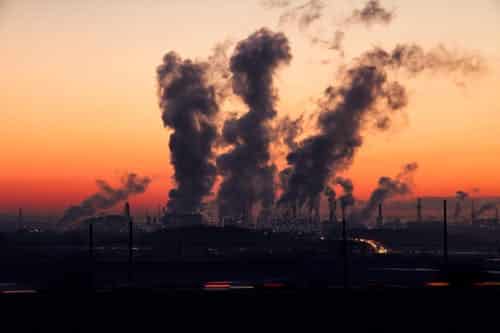New York Climate Action Council Unveils Draft Plan to Accomplish Emissions-Reduction Goals

The New York State’s Climate Action Council on Dec. 30 released a draft plan recommending policies and actions required to help meet the ambitious goals under the 2019 Climate Leadership and Community Protection Act, which calls for 85 percent reduction in greenhouse gases by 2050. The law requires New York to source 70 percent of its electricity from renewable sources by 2030 and transition to zero-emitting generation a decade later.
The draft presents a vision for decarbonizing New York over the next several years and outlines numerous sector-specific plans based on direction from seven advisory panels, as well as the Climate Justice Working Group and Just Transition Working Group. The advisory panels represent key economic sectors equipped with providing recommendations to the council as it crafts a strategic plan to transform New York’s economy, create jobs, and spur industry and innovation, while enhancing community resilience. The sectors are transportation, agriculture and forestry, land use and local government, power generation, energy efficiency and housing, energy intensive and trade exposed industries, and waste.
Earlier, on Dec. 20, the council voted unitedly and agreed on the most recent draft of the plan. The New York Department of Environmental Conservation seeks public comment from Jan. 1 onwards for 120 days. The public comment period will also include a series of stakeholder consultations and council discussions and at least six public hearings across the state. Public comment on the draft plan will inform the final plan, which will be submitted to the governor and the legislature by Jan. 1, 2023.
The law established requirements for investments in communities that experienced disproportionate climate change impacts, including a requirement that a minimum of 35 percent of clean energy benefits should go to disadvantaged communities. The Just Transition Working Group released a job study that focuses on the scope, skillset, and training needs of jobs required to overcome the climate crisis. The group also voted on draft criteria and definition of disadvantaged communities, and a draft list of such communities as well as criteria is set to be released for public comment. The resulting criteria will be used as a guideline for state climate investment.
The agency released a report identifying the barriers faced by disadvantaged communities, as well as recommendations to implement measures for climate mitigation, adaptation, and clean energy initiatives with a focus on climate justice. These recommendations will be incorporated in the final plan. Further, the agency released the first greenhouse gas emissions report required under the climate act, describing statewide emissions for 1990 through 2019. The report is the first in the U.S. to use a 20-year global warming potential and to account for emissions associated with imported electricity and fossil fuels.
EnerKnol Pulses like this one are powered by the EnerKnol Platform—the first comprehensive database for real-time energy policy tracking. Sign up for a free trial below for access to key regulatory data and deep industry insights across the energy spectrum.
ACCESS FREE TRIAL